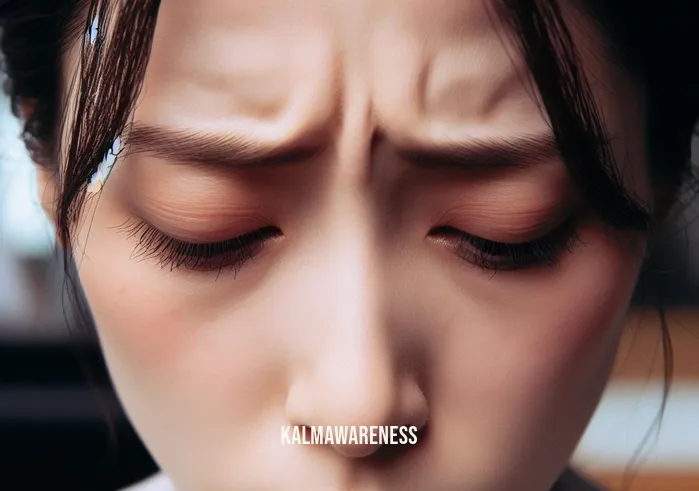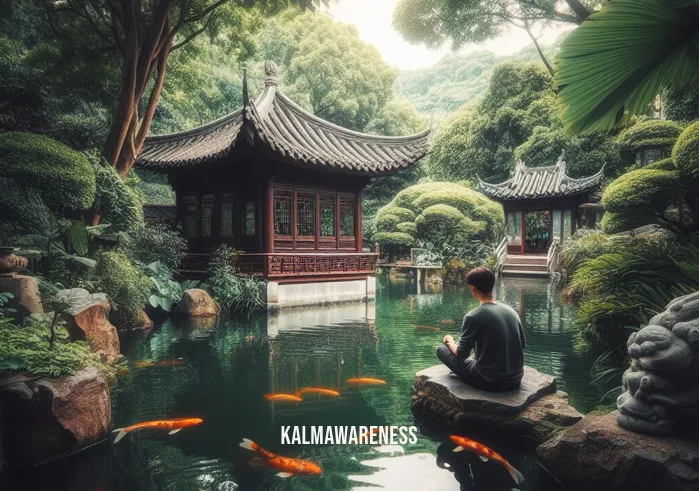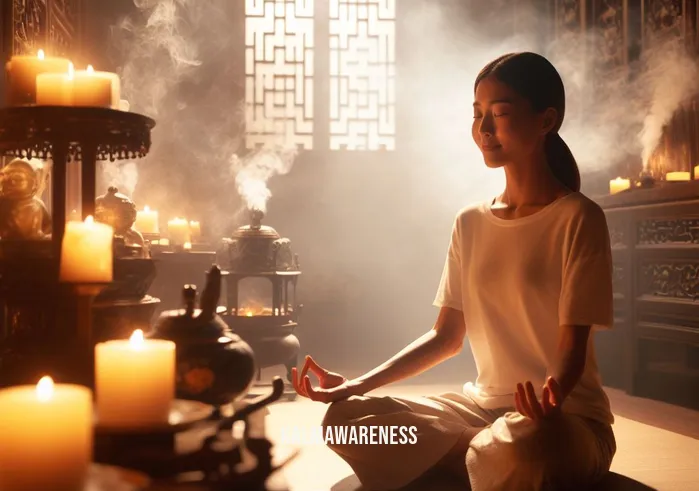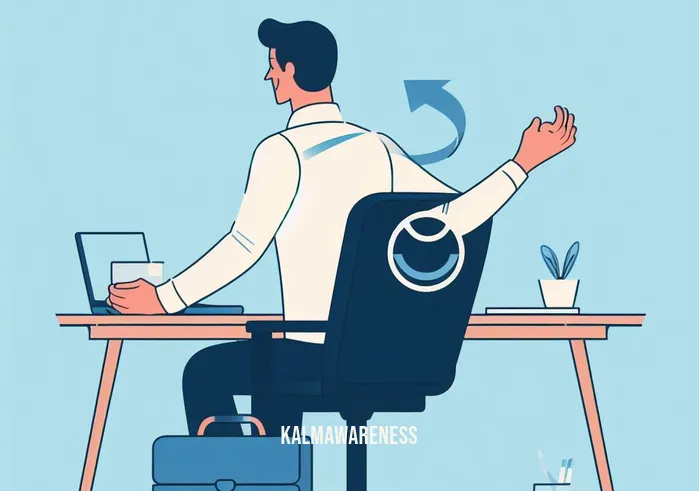Exploring the Depth of Meditative Chinese Discipline: An Introduction
The orient has long been a treasure trove of profound wisdom, ancient practices, and methods that elevate the human experience. One such treasure is the meditative Chinese discipline that encompasses a vast range of practices from Tai Chi, Qigong to breathing techniques and Traditional Chinese Medicine. This introduction seeks to set the foundation for a deeper dive into these practices, illuminating their history, benefits, and their seamless interconnection.
The Roots of Meditative Chinese Discipline
Chinese discipline, deeply rooted in the country’s philosophical and cultural history, offers insights into the delicate balance between the body, mind, and spirit. At the heart of this discipline lies a focus on mindfulness, a practice that involves attaining a peaceful state of mind in which thoughts are not occupied by worry. Whether you’re exploring Tai Chi’s fluid movements or the deeply contemplative nature of Qigong, mindfulness remains a consistent theme.
One might wonder about the importance of such practices in our fast-paced world. In fact, their significance becomes clearer when we consider the stresses of modern life. Train your mind to be stronger than your feelings, and you unlock a resilience that keeps you grounded amidst chaos.
Tai Chi and Qigong: Moving with Mindfulness
Often mistaken for one another, Tai Chi and Qigong, although interrelated, serve different purposes. While Tai Chi is primarily a martial art form, Qigong is more therapeutic, focusing on harnessing ‘Qi’ or life force. These practices go beyond mere physical movement. They represent the embodiment of the mindful movement, offering a dance between the tangible and intangible.
Moreover, Tai Chi and Qigong offer more than just a peaceful mind. They also come with numerous health benefits. From improving flexibility and balance to boosting immune response and cardiovascular health, these practices are more than just an exercise – they are a holistic health solution. Those curious about integrating such movements into their daily routines might find Jack Kornfield’s meditation for beginners a fitting starting point.
Breathing Techniques: The Bridge to Tranquility
Breath, in many oriental practices, is seen as the bridge between the mind and body. Breathing techniques, therefore, play a pivotal role in meditative Chinese disciplines. Not only do they help in stabilizing the mind, but they also invigorate the body. Ever wondered how to spell stabilize? It’s with a deep breath that centers and grounds.
One could also explore techniques that accentuate the aspect of mindful breathing. Practices like gratitude meditation before sleep can transform the quality of rest, ensuring a refreshed and rejuvenated start to the day.
Traditional Chinese Medicine: Nature’s Wisdom
While many associate Traditional Chinese Medicine (TCM) with acupuncture and herbal remedies, it’s crucial to understand the underlying philosophy. TCM is based on the principle of balance – between Yin and Yang, the five elements, and the body’s Qi. It’s not just about curing ailments but ensuring a harmonious flow of energy throughout the body. A session of Rouse Yoga, for instance, can be more healing than one might expect, thanks to its foundation in TCM principles.
Embracing the Journey Ahead
This journey into meditative Chinese discipline offers a promise – a promise of discovery, healing, and a deeper connection to oneself. As we venture further into these practices in the subsequent chapters, expect insights that help you integrate them into your daily life, enhancing not just your physical well-being but also your mental and spiritual equilibrium.
For those eager to continue this exploration, stay tuned. Our next segment will delve deeper into the intricacies of Tai Chi and Qigong, helping you distinguish, understand, and appreciate the nuances of these ancient practices. So, do keep in mind to continue reading for a transformative journey that promises balance, peace, and holistic well-being.

The Foundations and Practices of Meditative Chinese Discipline
Meditative Chinese discipline encompasses a myriad of practices that offer holistic benefits for the body, mind, and spirit. While Chapter 1 introduced the foundations, we’ll delve deeper into the specific techniques and modalities that define this ancient tradition, offering valuable insights to seamlessly integrate these practices into modern life.
The Multi-faceted Benefits of Chinese Meditation
Meditative practices from the East are a profound journey into self-awareness and holistic healing. These benefits go beyond mere relaxation, aiming for genuine transformation:
- Emotional Balance: Practices like mindful hypnobirthing offer tools to manage emotions, fostering resilience and adaptability.
- Improved Physical Health: Techniques such as teenagers walking focus on enhancing physical vitality, promoting cardiovascular health, and refining body posture.
- Cognitive Enhancements: Mind exercises, including mirror gazing spiritual benefits, can sharpen memory, improve focus, and enhance cognitive functions.
- Spiritual Growth: Delving into practices such as meditation made simple can usher in spiritual growth, connecting us to a larger existence beyond the mundane.
Techniques of Meditative Chinese Discipline: An Overview
To truly comprehend the depth of meditative Chinese discipline, it’s essential to understand the plethora of techniques it encompasses. Here’s a snapshot to guide your exploration:
| Technique | Primary Benefit | Suitable For |
|---|---|---|
| Touching specific body parts | Enhances sensory awareness | Individuals seeking heightened sensory perception |
| One practice for each blessed day | Daily mindfulness routine | Those wanting daily mindful routines |
| Mindful resting postures | Calming the mind | Anyone needing relaxation and mental calm |
| Judgement exploration | Cultivating discernment | Spiritual seekers aspiring for deeper insights |
| Element-focused exercises | Balancing elemental energies | Individuals needing energetic balance and harmony |
Embracing Sustainability in Practice
Meditation, at its core, is a commitment. But how can one ensure that this commitment is long-lasting? The answer lies in sustainable self-care. This approach ensures that meditation isn’t just a passing phase but becomes an integral part of daily living. By focusing on practices that resonate with individual needs and complementing them with supportive habits, meditative Chinese discipline transforms from being an occasional activity to a deeply ingrained lifestyle.
Deciphering the Depth: Unfolding Layers of Meaning
Certain phrases or terms in Chinese meditative practices can sometimes seem cryptic. For instance, you might stumble upon a phrase like “how we get deep so fast”. Delving into its layers reveals that it’s not just about rapid progression but the profound transformations achieved within short periods. Such insights highlight the depth and richness of the tradition, urging enthusiasts to approach it with an open heart and an inquisitive mind.
Moving Forward: A Glimpse of the Journey Ahead
While we’ve shed light on the varied techniques and profound benefits of meditative Chinese discipline in this segment, our exploration is far from complete. In the next chapter, anticipate a deeper dive into the relationship between Traditional Chinese Medicine and meditation. Together, they weave a tapestry of practices that not only enhance well-being but also provide insights into the very essence of existence.
So, as we transition to the next segment, prepare to embark on a journey that promises a harmonious blend of age-old wisdom and modern understanding, guiding you towards a life of balance, serenity, and profound insight. Continue reading to explore this mesmerizing confluence.

Meditative Chinese Discipline: A Beacon of Hope and Inspiration
Throughout history, the realms of meditation and Chinese discipline have served as potent sources of hope and inspiration for countless souls. In this chapter, we’ll uncover the transformative power of meditative Chinese discipline, delving into inspiring quotes, real-life tales, and the profound hope embedded within this ancient tradition.
Drawing Strength from Ancient Wisdom
Meditative practices, stemming from Chinese traditions, have been life-altering for many. The depth of their wisdom, coupled with the simplicity of their techniques, makes them universally relatable. Here are some quotes that encapsulate this essence:
- “In stillness, find clarity; in movement, discover grace.” – Ancient Chinese Proverb
- “The stillness of meditation is the key to moving mountains.” – Lao Tzu
- “To understand the immeasurable, the mind must be extraordinarily quiet, still.” – Jiddu Krishnamurti
- “The soul always knows what to do to heal itself. The challenge is to silence the mind.” – Caroline Myss
- “Meditation is the tongue of the soul and the language of our spirit.” – Jeremy Taylor
Such profound words reiterate the transformative and healing power of meditative practices.
Real-life Tales: Inspiring Journeys of Transformation
Anna’s Rebirth through Qigong: Anna, a 42-year-old accountant, faced extreme stress due to her demanding job. She stumbled upon a practice that holds the essence of every blessed day. Incorporating Qigong into her daily routine, she experienced a paradigm shift in her perspective towards life, fostering a deep sense of peace and purpose.
Lee’s Escape with Tai Chi: After a traumatic accident, Lee, an ex-military officer, struggled with PTSD. The ancient art of Tai Chi, inspired by the subtlety of mindful movements, became his refuge. Over time, not only did his nightmares subside, but his physical mobility also drastically improved.
Nina’s Journey with Mindful Breathing: Plagued by anxiety, Nina sought solace in pills and therapy, only to find temporary relief. The breakthrough came when she embraced the art of lying down meditation, harnessing the power of mindful breathing. This simple practice enabled her to navigate anxiety attacks and regain control over her life.
Beyond Techniques: Embracing the Spirit of the Discipline
Meditative Chinese discipline is not just about the techniques. At its heart, it’s a philosophy, a way of life. When one begins to grasp the true meaning beneath the depths, it transforms from being a mere practice to a guiding philosophy.
Looking Ahead: A Promise of Profound Transformation
While we’ve explored the power of meditative Chinese discipline as a source of inspiration and hope, our journey is just beginning. In the next chapter, we’ll venture into the scientific realm, showcasing empirical evidence and studies that validate the profound benefits of these ancient practices. With modern science as our compass, we’ll navigate the depths of meditative Chinese discipline, bridging the ancient and contemporary worlds.
As we progress, anticipate a harmonious blend of age-old wisdom and modern research. In the next chapter, we dive into the empirical validations and scientific revelations surrounding this ancient practice. Stay with us as we continue this enlightening journey.

Meditative Chinese Discipline: Decoding the Details
The world of meditative Chinese discipline is vast, intricate, and profound. While the previous chapters have laid a foundation, this chapter aims to delve deeper, offering a detailed breakdown of the nuances and subtleties of these practices. By demystifying its many layers, we hope to make this ancient wisdom more accessible and applicable to contemporary seekers.
Core Principles of Meditative Chinese Discipline
Meditative Chinese discipline, in its essence, hinges on a few foundational principles. Here they are, distilled and simplified:
- Holistic Integration: Emphasizing the unity of body, mind, and spirit, it seeks to cultivate a harmonious balance between these aspects of our being.
- Qi Cultivation: Qi, or life force, is central to these practices. Techniques are geared towards harnessing, refining, and directing this energy.
- Mindful Awareness: Whether it’s mindful movement or meditation, a heightened sense of present-moment awareness is consistently cultivated.
- Nature and Balance: Drawing inspiration from nature, these disciplines aim to align practitioners with natural rhythms, promoting health and balance.
The Techniques: A Categorized Breakdown
While numerous techniques fall under this discipline, they can be broadly categorized for easier understanding:
Movement-Based Practices
- Tai Chi: Fluid, dance-like movements that cultivate balance and flexibility.
- Qigong: Exercises focused on harnessing and directing Qi or life force.
- Walking Meditations: Practices like teenage walking, which infuse mindfulness into daily activities.
Meditative Practices
- Seated Meditations: Techniques like lying down meditations which cultivate inner stillness.
- Guided Visualizations: Imagery-based practices that harness the power of the mind.
- Breathing Techniques: Focused on refining and controlling the breath for health and clarity.
Energetic Practices
- Qi Cultivation: Harnessing life force through specific exercises and visualizations.
- Chakra Balancing: Aligning and refining the body’s energy centers.
- Meridian Work: Techniques that work on the body’s energy pathways.
Understanding The Role of Traditional Chinese Medicine
While meditative disciplines offer spiritual and mental benefits, they are closely linked with Traditional Chinese Medicine (TCM) for physical well-being:
- Holistic Diagnosis: TCM views ailments not just as isolated events but symptoms of deeper imbalances.
- Natural Remedies: Employing herbs, acupuncture, and other natural remedies, TCM complements meditative practices.
- Energetic Understanding: Both TCM and meditative disciplines recognize the importance of Qi, making them complementary in approach.
The Impact: Tangible Benefits
Beyond the spiritual and mental realms, these disciplines offer very tangible benefits:
- Enhanced Physical Health: From improved cardiovascular health to better flexibility.
- Mental Clarity: Reduced stress, improved focus, and heightened cognitive abilities.
- Emotional Balance: Techniques that offer tools for emotional resilience and balance.
Navigating Forward: The Final Exploration
As we have unpacked the many facets of meditative Chinese discipline, it becomes clear that its beauty lies not just in its depth but also in its holistic approach to well-being. As we transition to our concluding chapter, prepare for a synthesis of all we’ve learned. The next chapter promises to tie all these strands together, offering a cohesive understanding and practical steps to integrate this wisdom into everyday life. Stay with us for this final enlightening segment.

Meditative Chinese Discipline: A Journey of Rediscovery and Enlightenment
As we draw the curtain on our exploration of meditative Chinese discipline, it’s time to reflect on the transformative journey we’ve undertaken together. This ancient wisdom, which has been a beacon of hope and a source of inspiration for millennia, beckons us to integrate its teachings into our modern lives, promising a harmonious blend of mind, body, and spirit.
Glimpses from Our Expedition
Over the course of these chapters, we ventured deep into the heart of Chinese meditative practices:
- We began by setting a foundation, appreciating the rich history and profound philosophy of this discipline.
- We then explored its multi-faceted benefits, from emotional balance to enhanced cognitive abilities.
- Real-life tales illuminated its transformative power, offering hope and inspiration.
- A detailed breakdown helped us understand its myriad techniques, revealing its vastness and depth.
- Finally, the intertwining threads of Traditional Chinese Medicine showcased the holistic nature of these practices.
Through it all, the sustainable self-care approach stood out, urging us to make these disciplines a consistent part of our lives.
The Essence: A Holistic Way of Life
Meditative Chinese discipline is more than just a set of techniques. It’s a way of life. By harmonizing our inner energies, aligning with nature, and cultivating mindfulness, we can navigate the tumultuous seas of modern existence with grace and poise.
Applying the Wisdom: Steps Forward
To truly harness the power of this discipline:
- Begin with small, daily practices. Even 10 minutes of mindful movement can make a difference.
- Explore resources like Jack Kornfield’s beginner’s guide to deepen your understanding.
- Engage with a community or join classes to stay committed and motivated.
A Heartfelt Gratitude
To our cherished readers, thank you for embarking on this enlightening journey with us. Your curiosity and eagerness to learn are the driving forces behind our endeavor to bring such content to life. We hope this exploration has added value to your life and sparked a flame of interest to delve even deeper.
The Path Ahead: Continuous Exploration
While we conclude this series, remember that learning is a lifelong journey. We encourage you to revisit previous sections for deeper insights and to explore other enlightening content on our platform. Our commitment to illuminating ancient wisdom in a contemporary context remains unwavering.
Stay tuned for more insights, and as always, continue your journey with an open heart and an inquisitive spirit. Let the teachings of meditative Chinese discipline guide you towards a life of balance, serenity, and profound wisdom.





